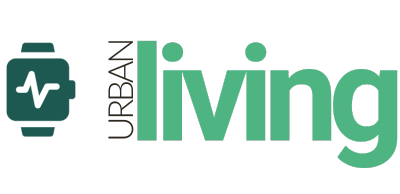As we age, our skin naturally loses elasticity due to decreased collagen production, resulting in sagging, fine lines, and wrinkles.
While surgical facelifts were once the only option, advances in aesthetic medicine have introduced numerous non-surgical alternatives that provide impressive results with minimal downtime.
Related: The Complete Guide to Facelift in Singapore
This comprehensive guide explores everything you need to know about non-surgical facelifts in Singapore, including available treatments, costs, benefits, and what to expect.
Understanding Non-Surgical Facelifts
A non-surgical facelift encompasses a range of aesthetic treatments designed to rejuvenate facial appearance without invasive surgery.
These procedures typically involve minimal to no incisions, significantly reducing risks associated with traditional surgery such as scarring and extended recovery periods.
The primary purpose of these treatments is to address various signs of aging—fine lines, wrinkles, sagging skin, and loss of facial volume—using less invasive techniques.
By stimulating the body’s natural collagen production, tightening skin, and restoring facial volume, patients can achieve a more youthful appearance with fewer risks and minimal downtime compared to surgical alternatives.
Why Some Non-Surgical Facelift Treatments Don’t Show Results
Many aesthetic clinics in Singapore promise dramatic results from non-surgical facelifts. Unfortunately, some patients spend significant money on multiple treatments without seeing visible improvements. There are several reasons for this:
- Inappropriate technology selection: Not all devices are suitable for every patient. The penetration depth of energy used is crucial for effectiveness. To truly stimulate collagen production, treatments need to reach the SMAS (subcutaneous musculo-aponeurotic system) layer at about 4.5mm depth.
- Intolerable energy delivery: Some treatments cause significant discomfort. When patients cannot tolerate the full energy output, doctors may reduce the power, resulting in under-treatment and diminished results.
- Equipment quality issues: There are many “copycat” machines on the market claiming miraculous results. Always verify that your doctor uses established, reliable technologies from reputable manufacturers.
- Incorrect assessment of your condition: Not everyone is suitable for energy-based facelifts. Patients with excessive skin laxity, large fat pads, significant volume loss, or bone resorption may not see satisfactory results from these treatments.
Energy-Based Non-Surgical Facelift Options and Costs
Beyond the treatments covered previously, here’s a more mobile-friendly comparison of energy-based options available in Singapore:
| Treatment | Key Features | Effectiveness | Cost Range |
|---|---|---|---|
| Thermage (Radiofrequency) | 3mm penetration, high pain level | Moderate | $2,800 – $6,000 |
| Ultherapy (HIFU) | 4.5mm penetration, gold standard | Excellent | $3,200 – $5,800 |
| Ultra Skin II (HIFU) | 4.5mm penetration, moderate pain | Excellent | $2,000 – $3,600 |
| Ultraformer III (HIFU) | 4.5mm penetration, moderate pain | Excellent | $2,400 – $3,800 |
| FOTONA 4D Laser | 4-5mm penetration, lower pain | Excellent | $600 – $1,200* |
| Titan (Infrared) | 1-2mm penetration, moderate pain | Moderate | $400 – $1,200 |
| Sygmalift | Combined cold laser & HIFU, low pain | Good | $250 – $800* |
*Requires multiple sessions
Beware of Suspiciously Low Prices
Some spas promote HIFU full-face treatments for as little as $200-300. These almost certainly use non-authentic machines that cannot deliver effective results. Given the high cost of legitimate HIFU equipment, clinics offering treatments at these prices would be operating at a loss.
Similarly, be cautious of fillers offered for less than $300 per tube or full-face threadlifts for under $400. When prices fall below the cost of materials, the quality and sourcing become highly questionable.
The Importance of a Comprehensive Approach
A significant issue in the industry is that many doctors offer only one type of non-surgical facelift procedure, limiting their ability to provide optimal results.
Energy devices, filler lifts, and threadlifts work best when used in combination, tailored to each patient’s specific needs.
Related: Dermal Fillers in Singapore: The Comprehensive Guide
There are several reasons why some clinics focus exclusively on energy-based treatments:
- These treatments are non-invasive with minimal risk of complications
- They’re convenient and straightforward to perform
- Clinics may feel pressure to recoup the high cost of equipment (machines like Ultherapy can cost up to $150,000)
However, this approach often shortchanges patients who might benefit more from a different treatment or combination of treatments.
Are You a Good Candidate for Energy-Based Treatments?
Ideal candidates for energy-based non-surgical facelifts typically have:
- Early signs of skin laxity
- Minimal excess skin
- Minimal facial volume loss
- Skin that isn’t too heavy
- Mild to moderate soft tissue (fat pads)
Patients with significant laxity, pronounced facial fat pad descent, or substantial soft tissue sagging may not see satisfactory results from energy-based treatments alone. In these cases, a combination approach or different treatment modality would be more appropriate.
How to Choose the Right Doctor for Your Non-Surgical Facelift
1. Ask about their range of procedures
A good aesthetic doctor should offer various types of non-surgical facelift options, not just those involving the equipment they happen to own. This ensures they can recommend what’s truly best for your specific condition rather than pushing a one-size-fits-all approach.
2. Inquire about their experience
Ask how many procedures they’ve performed and what types of energy devices they’ve used. An experienced doctor should have both breadth of experience across various treatments and depth of experience in each specific procedure.
3. Request before and after photos
Never hesitate to ask for photos from previous patients. While individual results vary, these images can give you a good indication of the doctor’s competence and the potential outcomes you might expect.
Popular Non-Surgical Facelift Options in Singapore
1. Filler Lifts
Fillers have been used in aesthetic medicine for over a decade. Initially developed to fill facial depressions and skin folds, they’re now recognized as effective for face-lifting as well.
Common fillers used in Singapore:
- Restylane, Belotero, Teosyal, Juvederm (Hyaluronic Acid)
- Radiesse (Calcium Hydroxyapatite)
- Sculptra (Poly-L-Lactic acid)
- Ellanse (Polycaprolactone)
Popular filler lift techniques include:
- The Hairline Lift (developed by Dr. Peter Huang from Taiwan) – This technique tightens the sides of the face and jowls using fillers placed in the hairline as an anchor point. It creates an upward pulling force on facial muscles, similar to a surgical facelift effect.
- Radiesse 3D Vector Lift – This involves the placement of linear Radiesse filler threads under the skin, along the upward vectors of the face. This stimulates contraction and tightening of the skin in those directions.
- The Butterfly Lift (developed by Dr. Puttipong Poomsuwan of Bangkok) – This targets the true retaining ligaments of the face. Depositing fillers directly under these ligaments creates a pressure tenting effect, resulting in immediate skin tightening and lifting.
Pros:
- Instant visible lifting effect (cheeks, jowls, smile lines)
- Excellent for last-minute treatments before important events
- No downtime
Cons:
- Limited effectiveness for moderate to severely saggy faces
- Requires large volumes of fillers (3-7 ccs) for full-face treatment
- Risk of a chubby-looking face or lumpy skin if performed by inexperienced practitioners
Cost in Singapore: $2,100 – $4,900
2. Silhouette Soft Thread Lift
Silhouette Soft is the only FDA-approved threadlift available. It’s particularly notable for having virtually zero downtime.
This treatment repositions saggy fat tissues and loose skin to their original youthful position. Its patented 360° cone action enables an all-around concentric tightening effect around the cones.
Pros:
- Immediate visible lifting that continues to improve over 3-4 months
- Particularly effective for thinner, mildly saggy faces
- No downtime
- Less painful compared to other threadlift procedures
- Minimal side effects like thread extrusion, loosening, or breakage
Cons:
- Less dramatic immediate lifting compared to Korean threadlifts
- Not ideal for heavily sagging faces (might need combination with other treatments)
- Higher cost due to patented American technology
Cost in Singapore: $1,000 – $2,000 per pack (one pack contains 2 threads). A full-face treatment typically requires 2-3 packs.
3. Korean Threadlifts
Korean threadlifts have gained significant popularity in Singapore for their effectiveness in treating sagging facial tissues.
These threadlifts work through the following mechanism:
- Threads with hooks and barbs are placed under the skin or in the fat layer
- These threads create an instant lift by hooking the skin and underlying tissue in an upward direction
- The threads are fixed beneath the skin at the temples to support the lift
- Additionally, the threads stimulate collagen and elastin production around them, providing further rejuvenation and tightening effects
Pros:
- Immediate visible lifting that improves over 3-4 months
- Most dramatic lifting effect among all non-surgical treatments
- Versatile and suitable for all face types
Cons:
- Highly skill-dependent procedure (8 out of 10 doctors who learn how to perform Korean threadlifts eventually stop offering it)
- Risk of no results if not performed correctly
- Downtime of 3-7 days (bruising, swelling, pain), though this can be minimized with experienced practitioners
- Potential side effects in inexperienced hands (thread extrusion, migration)
- Market flooded with low-quality threads from Korea (important to be cautious of cheap options)
Cost in Singapore: $1,500 – $5,000
4. Ultherapy/HIFU (High-Intensity Focused Ultrasound)
Ultherapy is considered the gold standard for ultrasound skin lifting treatments with real-time visualization. It has FDA clearance and extensive clinical research supporting its efficacy.
This treatment uses ultrasound technology to bypass the skin’s surface, delivering energy at precise depths (1.5mm, 3mm, and 4.5mm) to target both dermal and foundational tissue layers where skin laxity begins. This energy initiates a regenerative process that stimulates new collagen production.
How Ultherapy works:
- Uses ultrasound imaging (similar to pregnancy scans) to see beneath the skin’s surface
- Precisely targets collagen-rich layers that respond best to treatment
- Delivers focused energy that heats tissue to optimal temperatures
- Treatment can be customized for individual skin needs and goals
Pros:
- Natural-looking results that enhance appearance without looking artificial
- FDA-cleared and CE-marked treatment with extensive clinical backing
- Can lift and tighten the upper face, lower face, neck, and improve décolleté wrinkles
- Results develop gradually over 2-3 months for a natural lift
- Results last 12-18 months on average
Cons:
- Full results take time to develop (2-3 months)
- Some patients may need more than one treatment for optimal results
- Higher cost compared to some other options
Cost in Singapore: Average full-face treatment starts from S$3,000
Conclusion
Non-surgical facelifts offer a practical and efficient alternative to traditional surgical methods for facial rejuvenation. With various options available in Singapore, patients can choose treatments tailored to their specific needs and concerns.
However, it’s crucial to understand that not all treatments are suitable for every patient, and sometimes a combination approach yields the best results. Choose a doctor who offers multiple treatment options and can recommend what’s truly best for your specific condition rather than pushing a particular procedure.
Remember that suspiciously low prices often indicate questionable equipment or materials. Prioritize finding an experienced, well-rounded practitioner who can provide honest assessments and realistic expectations for your non-surgical facelift journey.

